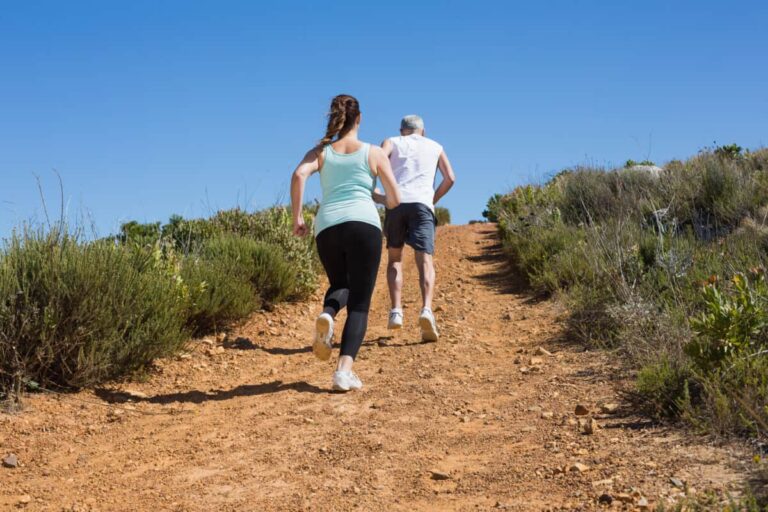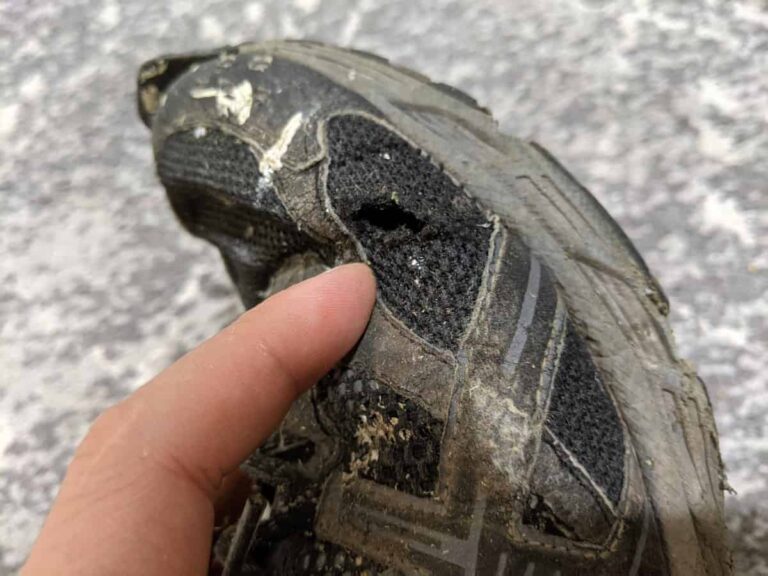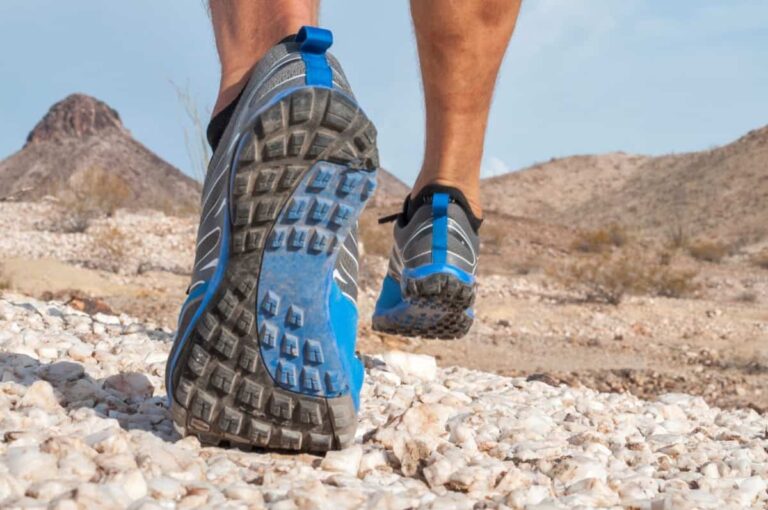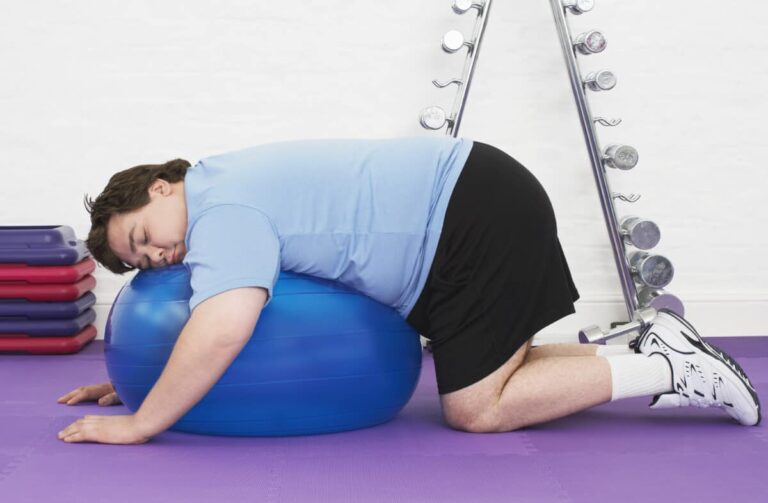Pilates Vs. Yoga: What’s Best For Runners?
If running hurts, there’s a good chance you are lacking in some fundamental muscle strength that can protect your bones as well improve your running speed and endurance. If you’re not much of a weight room kind of person, what about Yoga or Pilates?
Pilates focuses on building strength in your upper body, hamstrings, and glutes, which is helpful for runners. It improves muscular endurance, a requirement for many athletes. It works almost every muscle in your body without feeling fatigued, which is ideal for balancing a training routine.
Yoga and Pilates offer a range of similar techniques and benefits, so it can be hard to decide what to choose unless you try and see what works for you. Let’s look at some differences between the two and why Pilates might be the best option.
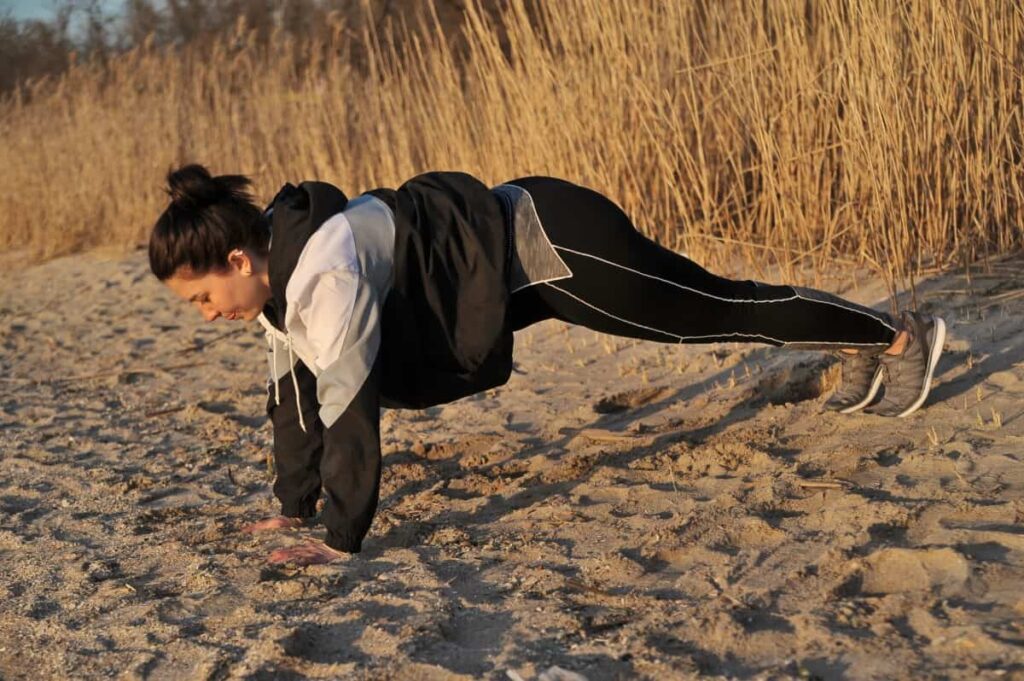
Why Is Pilates Best for Runners?
There are several reasons why many people prefer to use Pilates as a supplemental exercise to help with their running. Below are some of the reasons explained:
Pilates As Strength Training
The primary focus of Pilates is to build strength, particularly spinal and core strength. It was developed as a rehabilitation exercise for War soldiers, after all.
Many Pilates exercises include upper bodywork, especially for the back, hamstrings, and gluteus, which can help you with running if you are quad-dominant. Most movements found in Pilates routines emphasize muscular endurance, which is what long-distance running is all about (not to mention mental endurance).
The workouts don’t leave you feeling fatigued as if you have done a full session of weight-lifting, and this is why Pilates is excellent for balancing running and strength training, especially if you don’t love weight lifting.
Yoga can build strength, particularly in the core, but strength is not the primary focus of Yoga. It is mainly about stretching and mindfulness than increasing muscular strength and endurance.
Flexibility: Do Runners Need It?
Running requires you to have a good level of fitness and strength and doesn’t necessarily require a lot of flexibility unless you are doing a specific kind of running (such as hurdles).
You don’t want to be stiff to the point it causes you discomfort or pain. However, in a 1996 study, it was concluded that “inflexibility in certain areas of the musculoskeletal system might enhance running economy in sub-elite male runners by increasing storage and return of elastic energy and minimizing the need for muscle-stabilizing activity.” So, in any case, flexibility is not as important to many types of runners as flexibility is important in other sports.
Pilates techniques have less bending, twisting, and contorting than Yoga. This makes it more approachable than Yoga for less flexible runners.
Feeling comfortable and competent when working out, as well as enjoying the exercise, is essential for making it a regular part of your training routine. If you don’t like to do the exercise, you probably won’t do it for long.
Gentle stretching within your range of motion will prevent injury, undo the adverse effects of sitting and mobilize your hips for running. It is possible to turn to gentle stretching before and after training without the complete Yoga exercises.
Pilates as a Tool For Injury Prevention
Many runners use Yoga as a tool in preventing injury when training, but unlike Yoga and beyond injury prevention, Pilates provides an optimal rehabilitation program for injured runners.
Yoga incorporates many standing poses, whereas Pilates is performed in a prone or supine position lying on the mat. This helps runners with any sort of weakness or physical limit to still incorporate many Pilates exercises.
Runners who have injuries due to weak hips can use Pilates for building foundational strength to return to running without overtaking your body.
Pilates Brings A Mind-Body Connection To Running
Pilates, like Yoga, does require concentration in breathing, just not spiritually. However, what Pilates lacks in spirituality, makes up for in mental strength. It emphasizes precision and control – powerful tools to build your mental strength in the running.
This is perhaps one of the more important aspects of running. I think we don’t focus enough that in order to run, you need your mind to be strong so you can work past the discomfort and challenge so you can keep going.
If you’re running a 5k, 10k, half marathon, or full marathon, your body doesn’t like working hard, and so you have to work through those mental barriers in order to reach the finish line.
Being able to concentrate during a run improves your performance and experience. Breathing correctly is essential for running, as the ability to regulate oxygen in your body directly affects your speed and precision. Having conscious breathing control and mental strength will most likely be able to push harder further than if you were mindlessly running.
Pilates Is More Specific to Running Muscles
This is the guiding principle when developing a training program. As we have mentioned earlier, choosing a supplemental workout should be based on what will help you achieve your goals faster. Therefore in terms of running, how will the supplementary exercise improve your specific running goals?
Pilates builds foundational strength from your core, such as your abs, obliques, lower back, hips, and glutes. Your core is referred to as your powerhouse because it is where every movement comes from. When you are doing leg lifts or pushups, your core is what provides the strength and power for those moves.
Running relies on power and strength in your core (your powerhouse). Your glutes, more than any other muscle (even your quads or calves), are responsible for your stride and speed. The core additionally helps you maintain proper upright running form.
Pilates enables you to generate better power and strength from your core and can directly transfer over to your strength and power as a runner.
In this study, they found that those who incorporated core workouts helped runners perform faster than those who didn’t.
How Different Pilates Techniques Help Running
Stability is essential for good running technique and avoiding injury. In some cases, even a slight imbalance in the body will create problems because running is such a repetitive movement. A minor adjustment in your posture or your core stability can make a huge impact.
There are two Pilates classes from several that can make a significant difference in strength and stability for your running.
These two types are Matwork Pilates and Reformer Pilates
Both classes use the same muscles in the same ways but offer different challenges.
Matwork takes place on the floor and does not require any equipment. Sometimes small items such as balls, bands, and rollers can be used to make it more challenging.
Reformer Pilates uses Reformers. They are frame structures with springs and pulleys that provide resistance as exercises are performed and give a symmetrical grid to work in.
The Benefit of Reformer Pilates for Running
The closed chain environment provides a particularly effective workout and can work on correcting hip, knee, and ankle alignment and improving the tracking of the knee. It is beneficial for runners with knee problems and can focus on the vastus medialis obliquus, one of the quadriceps.
Runners generally do get strong quads, but the stabilizing muscle can be weak. Reformers can have a specific attachment called a jump board, which is excellent for improving your running action.
The Benefit of Matwork Pilates for Running
The best part about Matwork is that you can do it anywhere. In particular, it is excellent before and after a run because no matter where you are, even in small spaces, you can lay the mat down and do the workouts.
The Reformer probably gives you slightly quicker results than you will get by just doing Matwork. However, thinking realistically, many runners won’t always have access to Reformers, and therefore using the Matwork exercises can help make sure you get a workout in.
When Would Yoga Be A Better Option?
Pilates focuses on relaxing but strengthening tense muscles, and Yoga is used to improve flexibility in the joints. There are some reasons why Yoga would be a better option, for example:
Variety of Yoga Types
Yoga offers a wide variety of styles. You can practice Yin Yoga on a rest day, use Vinyasa Yoga for strength training, or Hatha Yoga for flexibility and mobility work.
Pilates offers various levels of experience, but generally, its workouts will be demanding. Whether you are on the Reformer or a mat, you will be engaging your muscles and working your core constantly. You can make a Pilates workout easier by shortening the duration or modifying the movements, but unlike ‘restorative Yoga,’ there is no ‘recovery Pilates.’
Considering that, Yoga might be an excellent choice to add to your rest days if you need something to wind your muscles down or maybe use specific Yoga types for specific training methods for your runs.
Past that–sometimes a training plan can be grueling, and sometimes you don’t want to focus on that last ounce of performance–sometimes you just want to stretch your body and open your mind. Restorative yoga is amazing for that.
Yoga And Meditation
Yoga requires concentration and attention to breathing and incorporates a spiritual aspect which Pilates does not.
Being able to control and monitor your breathing during running gives you better control over your pace as well as in races or more strenuous exercises.
Yoga might be what you need if you seek that spiritual connection with yourself and help you focus during running.
Choosing Both Yoga And Pilates For Running
You can add Pilates and Yoga to your exercise regimen. However, if you need one specifically for supplemental training to help you with running, it can be more beneficial to stick to one type so your body understands what it is working towards. You will most likely see faster results that way.
There is no cookie-cutter training plan in terms of running. Every runner will not respond equally to the same kind of workouts. Each body is different, and depending on the reason you want, supplemental training is a contributing factor to what will work best for you. The best way to make that decision is by trying out both workout methods to figure it out. There are, however, unique benefits of each one individually.
Should You Do Pilates Before Or After A Run?
In general, you should keep your intense core workouts (including PIlates) after your run.
However, Pilates can be used before or after running, and that is the beauty of it. Doing a Pilates workout before running can keep your body more resistant to injury, and doing it after running can reduce your recovery time.
If you want to strengthen your deep core muscles for running, do the exercises after running instead of before. This will leave your core muscles with energy to balance your body while running. Pilates is quite intense and focused, and you’ll want your core muscles to protect your back and joints while you run instead of using up all the energy beforehand.
The point of deciding on exercise before or after a run depends on what you want your outcome to be. If you’re going to build muscle, run first. If you’re going to build endurance and aerobic capacity, run after your workout.
Check out our article for a more in-depth analysis as well as the advantages and disadvantages of ab and core workouts before or after a run.
How Often Should You Do Pilates To See Results In Running?
Pilates is safe to do every day. Generally, when starting Pilates, you want to do it every day to gain a rhythm and get consistent. The goal would then be to do it every alternate day.
Another way to determine how often you should do Pilates is to decide which days you are running, you can either do it on your non-running days as supplemental training, or you can use it only on running days, either before or after your run to build endurance and heal your muscles.
The latter would be an ideal option to ensure that on your non-running days, you are actually giving your entire body and muscles complete rest to recover.
What’s the Difference Between Pilates And Yoga?
If you’re like me, when you first learned about Pilates and Yoga, you might have seen them as the same thing–it turns out they are very different in approach and purpose.
Yoga
The primary purpose for Yoga was created with the aim of connecting the human consciousness with the universal consciousness through physical activity and breathing techniques.
It was designed to improve physical, emotional, and spiritual health. It works on repetitive focusing on flexibility and broad muscle groups while proving to be highly therapeutic.
There are several types of Yoga, involving meditation and deep breathing, which aid in relaxation, and the meditative portion tends to attract people who are seeking to de-stress and slow down.

Yoga offers health benefits which include:
- Balance
- Strength
- Endurance
- Spirituality
- Meditation
- Controlled breathing
- Flexibility
Pilates
Pilates is a physical fitness system formed during World War I to help injured soldiers regain their health through strengthening, stretching, and stabilizing specific muscles.
It uses fewer and more precise movements to achieve the principles of Pilates correctly. These principles include:
- Correct alignment
- Centering
- Concentration
- Control
- Precision
- Breathing
- Flow
Mental and physical health is essential to one another, and achieving a balance of the two creates a method of total body conditioning.
Like Yoga, there are many benefits to Pilates, some of which are:
- No bulk
- Improves posture
- Inner strength
- Stress relief
- Increased energy
- Eliminates toxins
Amongst these, it can also improve bone density, pelvic floor function, and lung capacity.
How to Choose Between Yoga And Pilates For Running?
Firstly, it is necessary to define the reason you are running. That could mean you are an athlete, or maybe you are just doing it for fitness to get some cardio into your life. Other reasons could be that you use running to combat mental health or lose weight.
Once you distinguish why you are running and why you want to improve, you can define why you need supplemental training like Pilates or Yoga. It is best to choose one that better complements your initial reason for running because the more you tackle that, the faster you will get sustainable results.
Here are some tips to help you decide:
- Pilates exercises can be done using machines to add cardio to your techniques. Some techniques can help burn fat. This can boost your ability to burn extra calories and aid in fat loss.
- Sending your breath to specific problem areas holding stress can help relax those muscle groups in your body. Yoga is likely more effective in combatting anxiety or depression because it focuses mainly on the mind-body connection. Deep breathing helps to achieve relaxation.
- In terms of getting quicker results for body goals, fitness, and strength, you might want to give Pilates a go because its techniques are more intense than Yoga.
- Pilates is used in many situations for healing and strengthening the muscles. If you have back issues or specific injuries, you should take extra care doing Yoga or try Pilates instead. Certain Yoga poses can sometimes exacerbate the problem.
Conclusion
It is pretty clear that one exercise takes precedence over the other in terms of helping your running. While Yoga is excellent in many ways, Pilates has more benefits for runners than Yoga.
If you are a runner, regardless of what type of runner, Pilates can help you prevent injuries, heal injuries and strengthen your core and muscles to improve your running experience.
